SECURITY SCAN : Sri Lanka Crisis, Indo China relations, Strategic aspects of I2U2, Lessons from Ukraine
23 Jul 2022 11:30:16
In the first article of 'Security Scan', the week's top most security related issues and their lessons for India have been discussed; Sri Lanka Crisis, Indo China relations, Strategic aspects of I2U2, Lessons from Ukraine.
Sri Lanka Crisis and Lessons For India
What is worrying China at this point of time is its big investments that are at stake in the island nation. “Sri Lanka’s situation has eroded China’s credibility. If other poor countries refuse to repay Chinese loans, then it will be a setback to its agenda to trap the small but strategically important nations.” China is one of the important factors behind the fall of Sri Lanka’s economy.
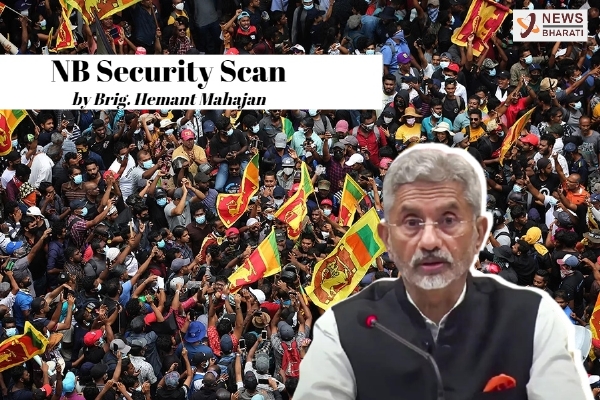
Lessons for India from Sri Lanka crisis are very clear;
- Freebies and subsidies like free electricity, water undermines economic development.
- Reckless commercial loan borrowing from China is dangerous.
- Fiscal deficit and current account deficit has to be kept under control.
- Organic farming has to be balanced with fertilizer based farming for ensuring food security.
- No free run to Chinese companies operating in India.
- Populism measures like reducing taxes promote economic bankruptcy.
As India’s neighbors bleed, with their poor economic health, refugees will infiltrate into India. We will have to tighten our coastal security.
India - China Relations Update
At the end of their 16th round of high-level talks at the Corps Commander Level between India and China on Sunday, there was no resolution to the proposals regarding further disengagement at the friction points along the Line of Actual Control. This means that the Chinese are not withdrawing from their incursions in Depsang and other places. India also pressed China to desist from flying fighter jets close to the friction points during the 16th round of top military talks, led by the 14 Corps Commander Lt-General Anindya Sengupta and Chinese Major General Yang Lin.
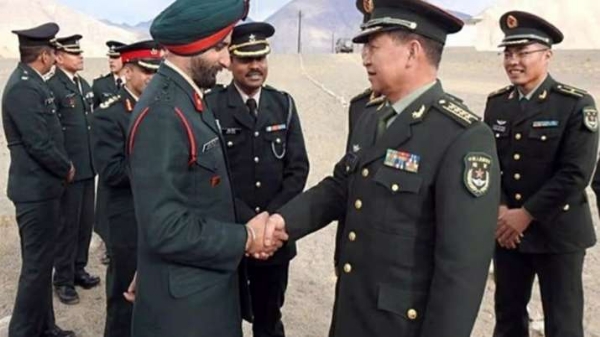
Indian response
China is not ready to disengage from its border standoff with India. As Chinese President Xi Jinping is looking to secure an third term at the helm of the Chinese party-state at the 20th Chinese Communist Party Congress later this year, he is unlikely to compromise on his aggressive foreign policy posture.
One way India can counter this is by ramping up its own border infrastructure development to keep eye on Chinese movement. In the last Union Budget, GoI increased the capital outlay for the Border Roads Organisation by 40%, which included a six-fold hike in allocation for Arunachal Pradesh’s Border Area Development Programme. In fact, India has quickened the pace of its border infrastructure development since the Galwan clashes, inaugurating multiple bridges and border roads along the LAC. It is also planning to enhance rail connectivity in the Northeast and in May 2020 increased the BRO’s procurement powers from Rs 7.5 crore to Rs 100 crore, allowing it to acquire critical equipment for speedier laying of border roads and other construction.
Whenever the People's Liberation Army Air Force fighter jets come too close to the border, the Indian Air Force responds immediately by scrambling its combat aircraft.
Mass Relocation of Tibetan Nomads:
China is relocating two million nomads and farmers who form one third of Tibet’s population, to grab their lands and to resettle them into surveillance colonies and carry out cultural genocide through land grab.
In China the ubiquitous residence permit confines an individual to a particular place and prohibits the person from travelling anywhere.
Shops and restaurants in China were, rejoicing in Abe’s tragic demise and offering discounts. This has led to suspicion that there was Chines hand behind his death.
Indian Response
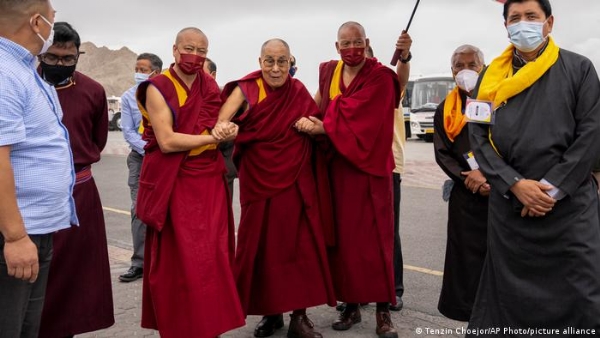
Dalai Lama’s presence in Ladakh at the time of border talk is not a coincidence. The fact that the Dalai Lama will stay for a month in Ladakh is definitively a re-assertion of India’s policy vis-à-vis the Tibetan leader. This is a signal to China of a change in India’s Tibet policy.
India escalated its crackdown on Chinese phone makers,Oppo, Vivo and Xiaomi because of claims of tax evasion and unlawful remittances.
India and Vietnam are celebrating the 50th anniversary of their diplomatic relations. Bolstering friendship between the two countries is a natural outcome of a growing convergence of their strategic and economic interests. India and Vietnam inked a 'joint vision' document to 'significantly enhance the scope and scale' of their bilateral defence ties by 2030, while also finalizing a reciprocal logistics support pact to allow their militaries to use each other's bases for repair and replenishment of supplies.
Vietnam is a key partner in SE Asia to counter China.
Economic and strategic dimensions of I2U2
The I2U2 group of countries, ‘I2’ standing for India and Israel and ‘U2’ representing the United States (US) and United Arab Emirates (UAE), held their first summit level virtual meet on 14 July, during US President Joe Biden’s visit to Israel.
All four member countries have highlighted six main areas of cooperation that have been selected to launch this engagement into its next stage. With geoeconomics being the central tenant, cooperative projects in the fields of water, food security, health, transportation, and space cooperation have been identified as the first set of pilots, operating under larger global umbrellas of issues such as international economic stability, climate change, volatile energy, and food markets.
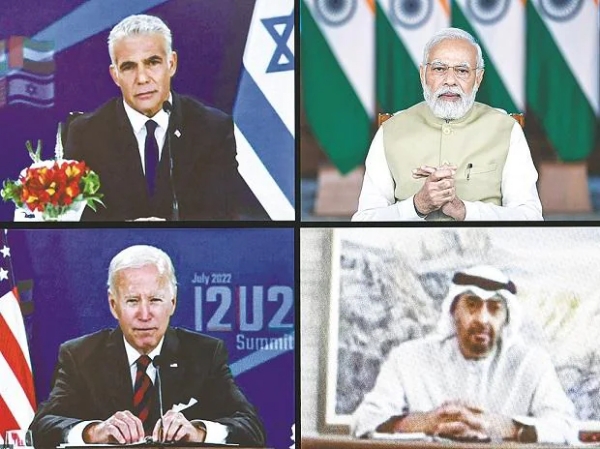
India has a great opportunity at hand as it is the only nation along with the US to be part of two Quads. For India, the biggest advantage in the West Asia Quad, is its bilateral ties with Israel and the UAE. With a bilateral trade of $59bn, the UAE is already
India’s third-largest trading partner after China and the US, as per the latest government data. India is also looking at concluding a free-trade pact with Israel. Both these factors make the West Asia Quad stronger and give a boost to accelerating India’s economic growth and increasing Comprehensive National Power for countering China.
Lessons From Ukrainian war
Ukraine war, has given a new lease of life NATO .There were 30 countries at this year’s NATO summit in Madrid on 29-30 June, which is an unprecedented number.
The Ukraine conflict is exposing limitations of applications of force . The victory at best can be partial, objectives limited in scope and shallow in reach. Concept of decisive victory, capitulation and conclusive defeat seem to be getting discarded.
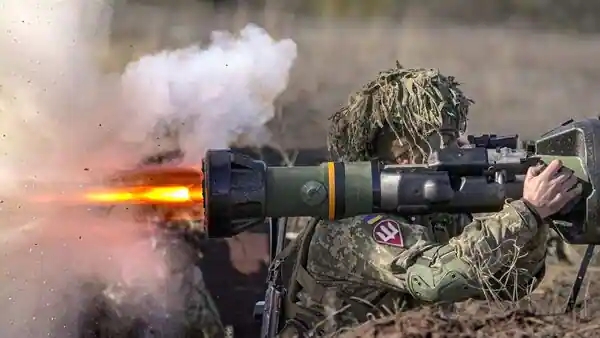
The war in Ukraine is a curious mix of old and new. Soldiers crouch in trenches that was in second world war, reconnaissance drone hover above. Some Ukrainian gunners receive orders via Elon Musk’s Starlink constellation of satellites. Others fire artillery pieces that pre-date the Cuban missile crisis. Chinese-made quad copters drop 1940s-vintage grenades on Russian tanks. Making sense of all this can be tricky. Conscription has ebbed away in America and most big European countries The wars of the past 30 years have been waged largely against assorted insurgents and guerrillas; the sound of big guns once more pounding out duels within Europe is disorienting.
Conclusion
For India, the membership in both the Quads offers a unique opportunity to assert its position as a global leader. The influence extends from the Indo- Pacific to the Middle East, giving India means to counter China. India needs to simultaneously engage in tactical collaboration with the US and other countries concerned about Chinese belligerence. The upcoming Yudh Abhyas joint exercise with Americans in the Himalayas and the finalizing of a logistics support pact with Vietnam are steps in the right direction.
India will have to look for 'India specific solutions' for each contingency. In the preparatory stage, the need is to validate existing plans and leverage our capabilities. These require realistic war gaming, net assessment and simulation.
View detailed analysis here;
